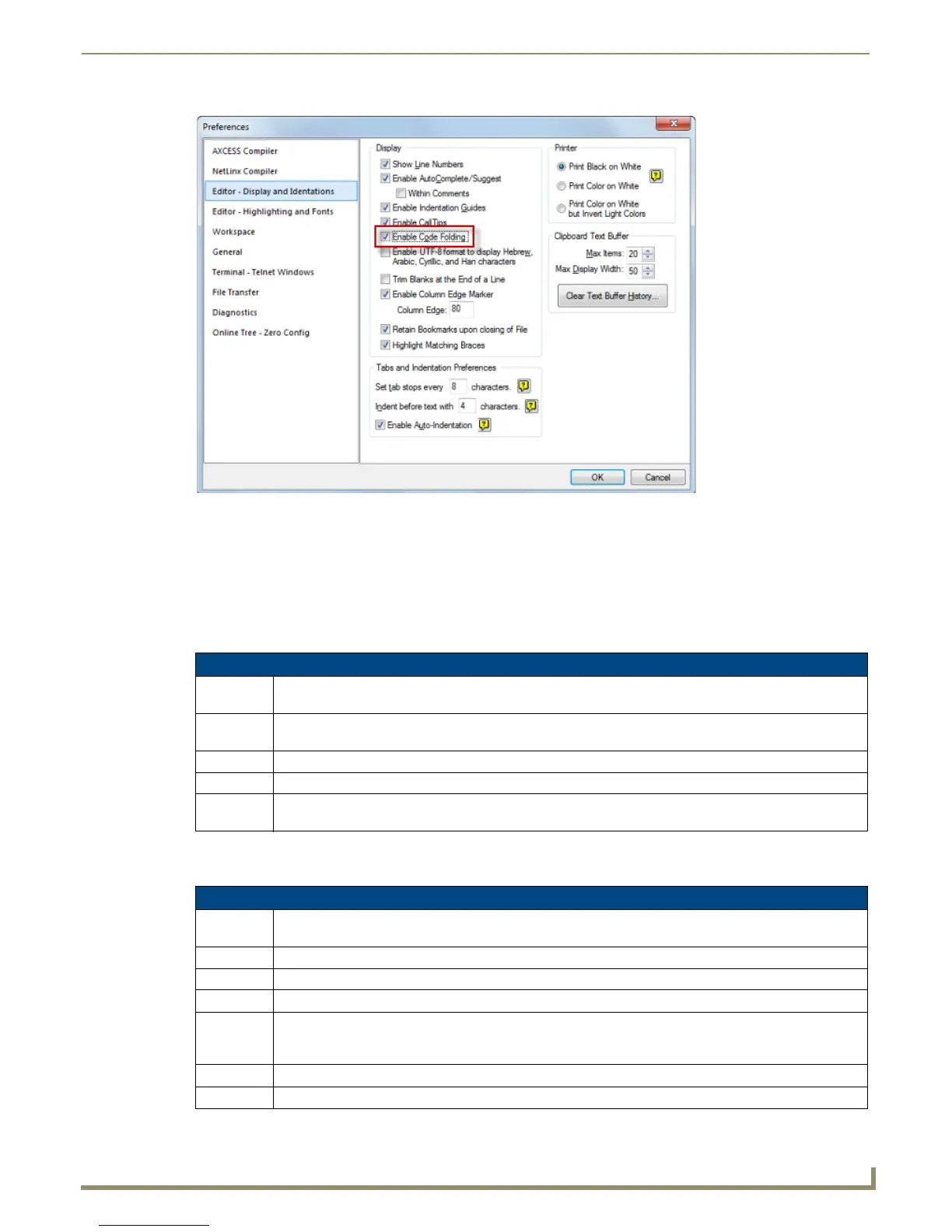Programming
79
NetLinx Studio - Instruction Manual
If the Enable Code Folding option has not been enabled, these two options are unavailable.
Also note that the application will remember your last code folding settings when the file is closed, so they
will still be in place the next you open the file.
Regular Expression Support
Regular expressions are notations used for describing patterns of text. They are a form of metacharacters, or characters
that define other characters. The regular expressions supported by NetLinx Studio are described below:
Regular Expression Special Characters
The following regular expression special characters are supported for Regular Expression search operations:
FIG. 142 Preferences dialog - Cold Folding Enabled
Supported Regular Expressions
Regular
Expression
Description
^ Represents the beginning of a line.For example, "^x" only matches an "x" that occurs at the beginning of a
line.
$ Represents the end of a line.For example, "$x" only matches an "x" that occurs at the end of a line.
. Represents any character.For example, " x.y" matches " xay" and " xzy" but not " xy" or " xyxy".
* Specifies zero or more occurrences of the previous "." or literal character. For example, x*y matches " xzy"
or " xy".
Supported Regular Expression Special Characters
Special
Character
Description
. Matches on any character.
\( This marks the start of a region for tagging a match.
\) This marks the end of a tagged region.
\n This refers to the first through ninth tagged region when replacing (where n is 1-9). For example: if the
search string was Fred\([1-9]\)XXX and the replace string was Sam\1YYY, when applied to Fred2XXX this
would generate Sam2YYY.
\< This matches the start of a word.
\> This matches the end of a word.

